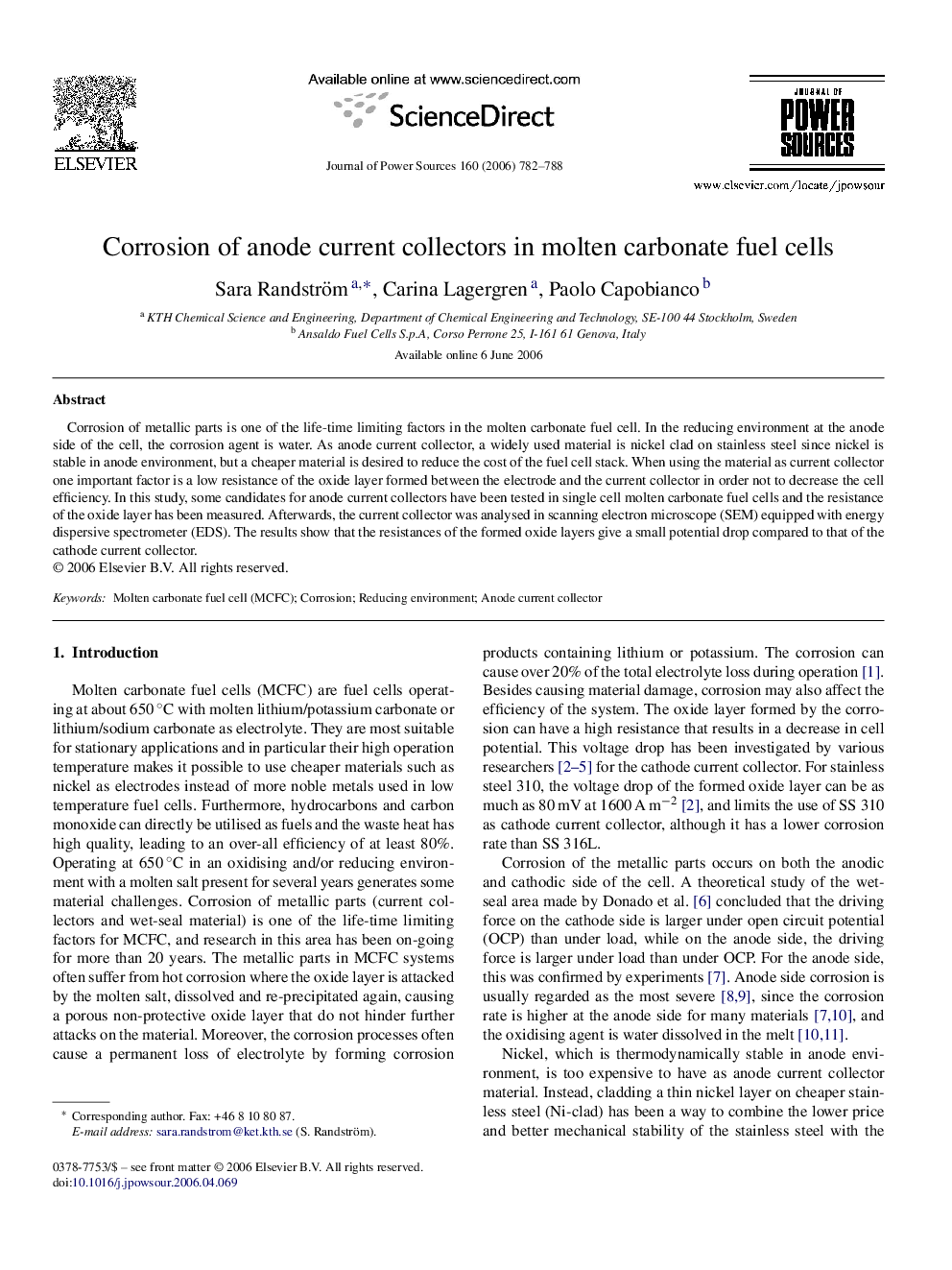| Article ID | Journal | Published Year | Pages | File Type |
|---|---|---|---|---|
| 1287125 | Journal of Power Sources | 2006 | 7 Pages |
Corrosion of metallic parts is one of the life-time limiting factors in the molten carbonate fuel cell. In the reducing environment at the anode side of the cell, the corrosion agent is water. As anode current collector, a widely used material is nickel clad on stainless steel since nickel is stable in anode environment, but a cheaper material is desired to reduce the cost of the fuel cell stack. When using the material as current collector one important factor is a low resistance of the oxide layer formed between the electrode and the current collector in order not to decrease the cell efficiency. In this study, some candidates for anode current collectors have been tested in single cell molten carbonate fuel cells and the resistance of the oxide layer has been measured. Afterwards, the current collector was analysed in scanning electron microscope (SEM) equipped with energy dispersive spectrometer (EDS). The results show that the resistances of the formed oxide layers give a small potential drop compared to that of the cathode current collector.
